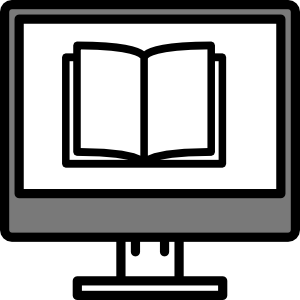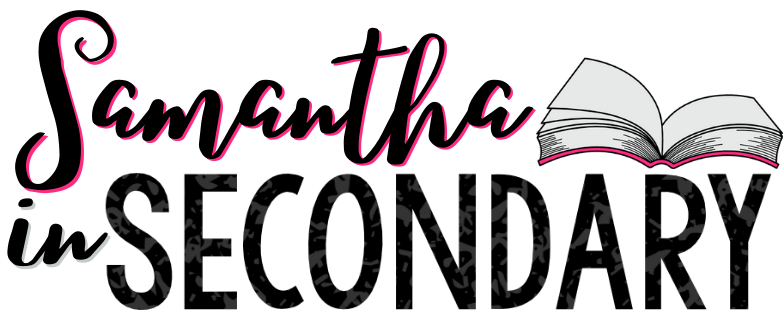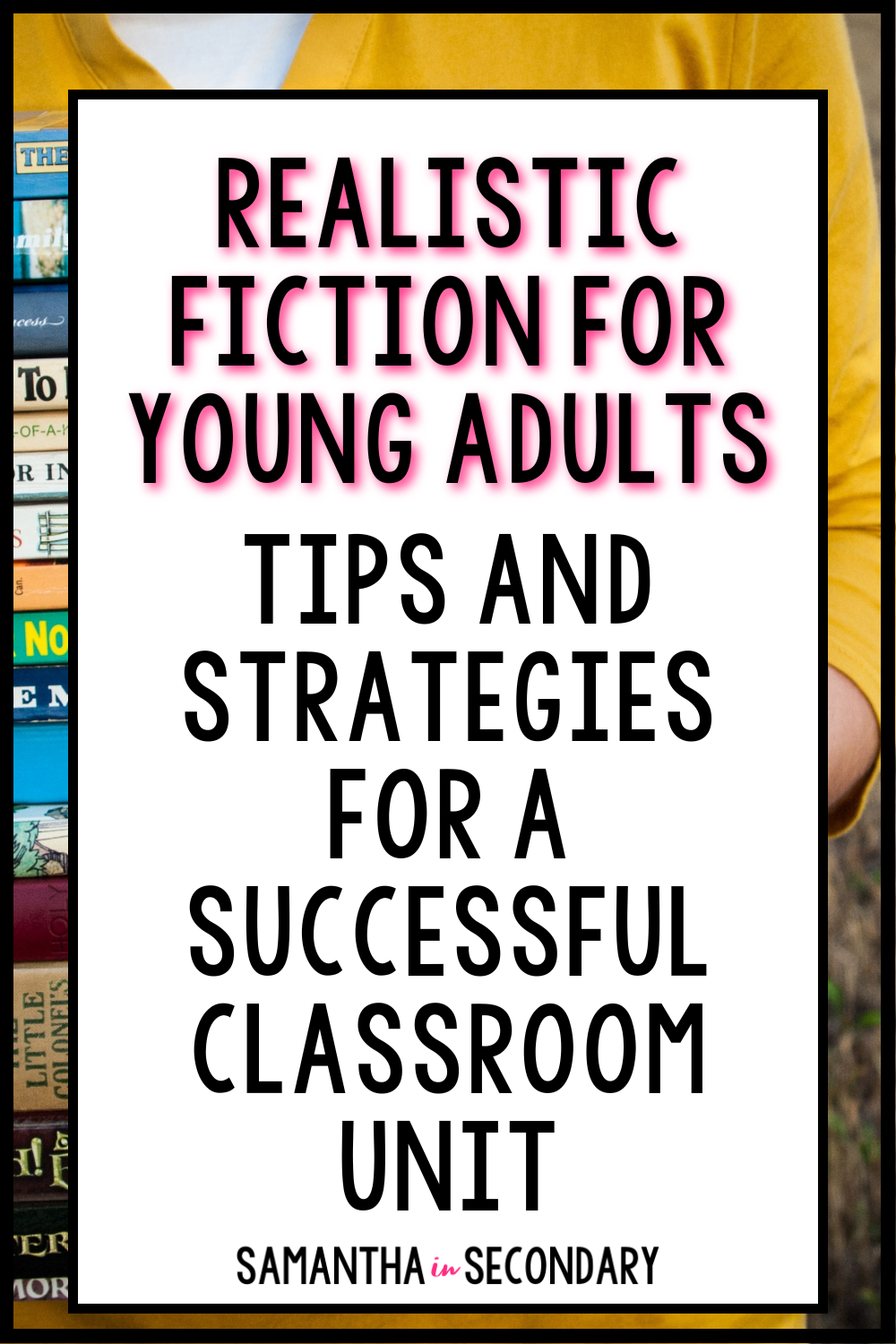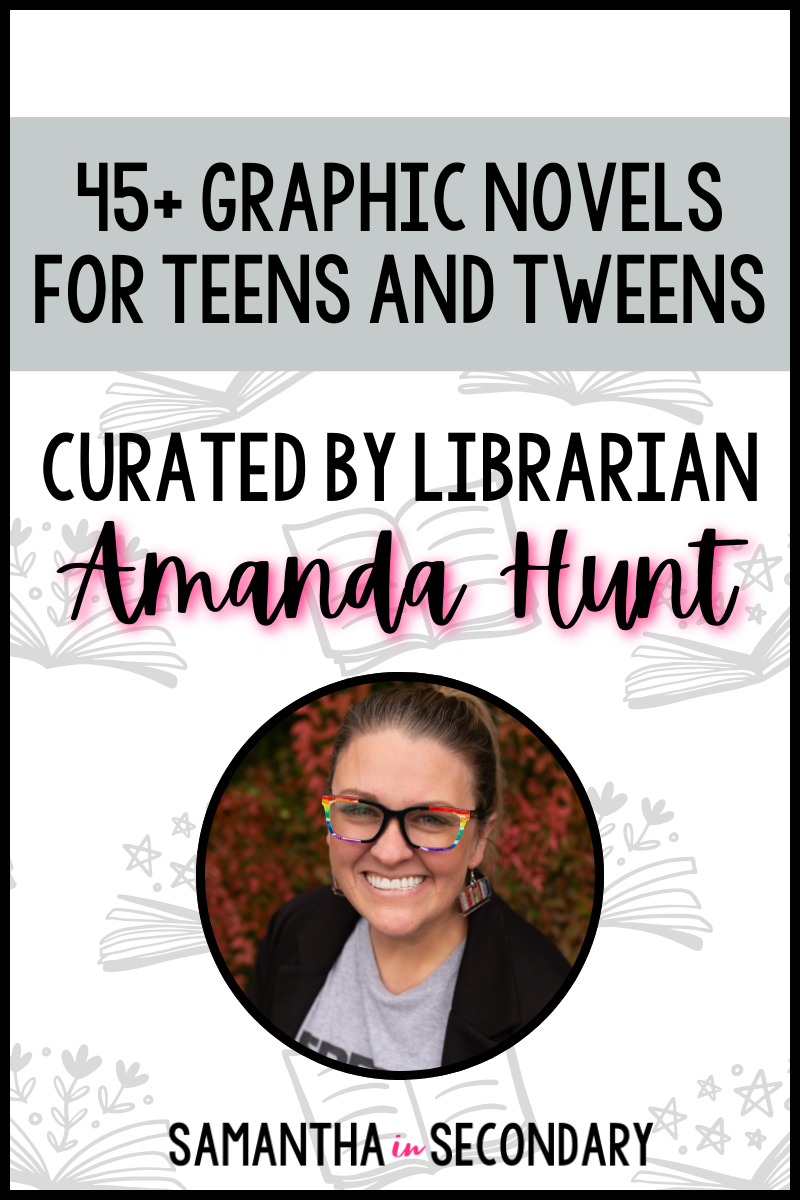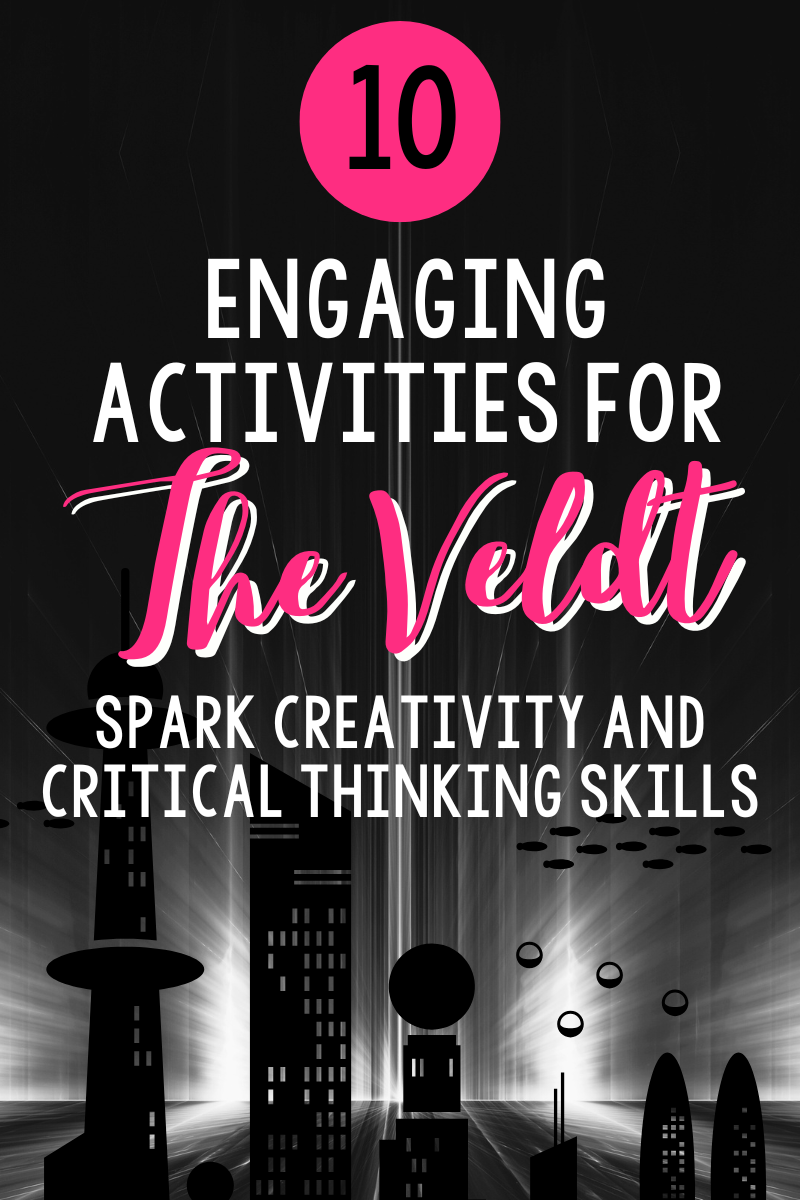Whether you are looking for a unit or you have a whole class dedicated to creative writing, there are a plethora of activities and resources to choose from. And just because you teach secondary ELA doesn’t mean your “big kids” don’t enjoy the creative outlet. Not every creative assignment has to be seriously minded or a huge endeavor. Creative writing projects can simply be warm-ups for the class, an activity for early finishers, or a great “filler” assignment when you want to work on writing but don’t want students dedicating weeks to an essay. I’ve got 10 easily applied creative writing activities for secondary ELA.
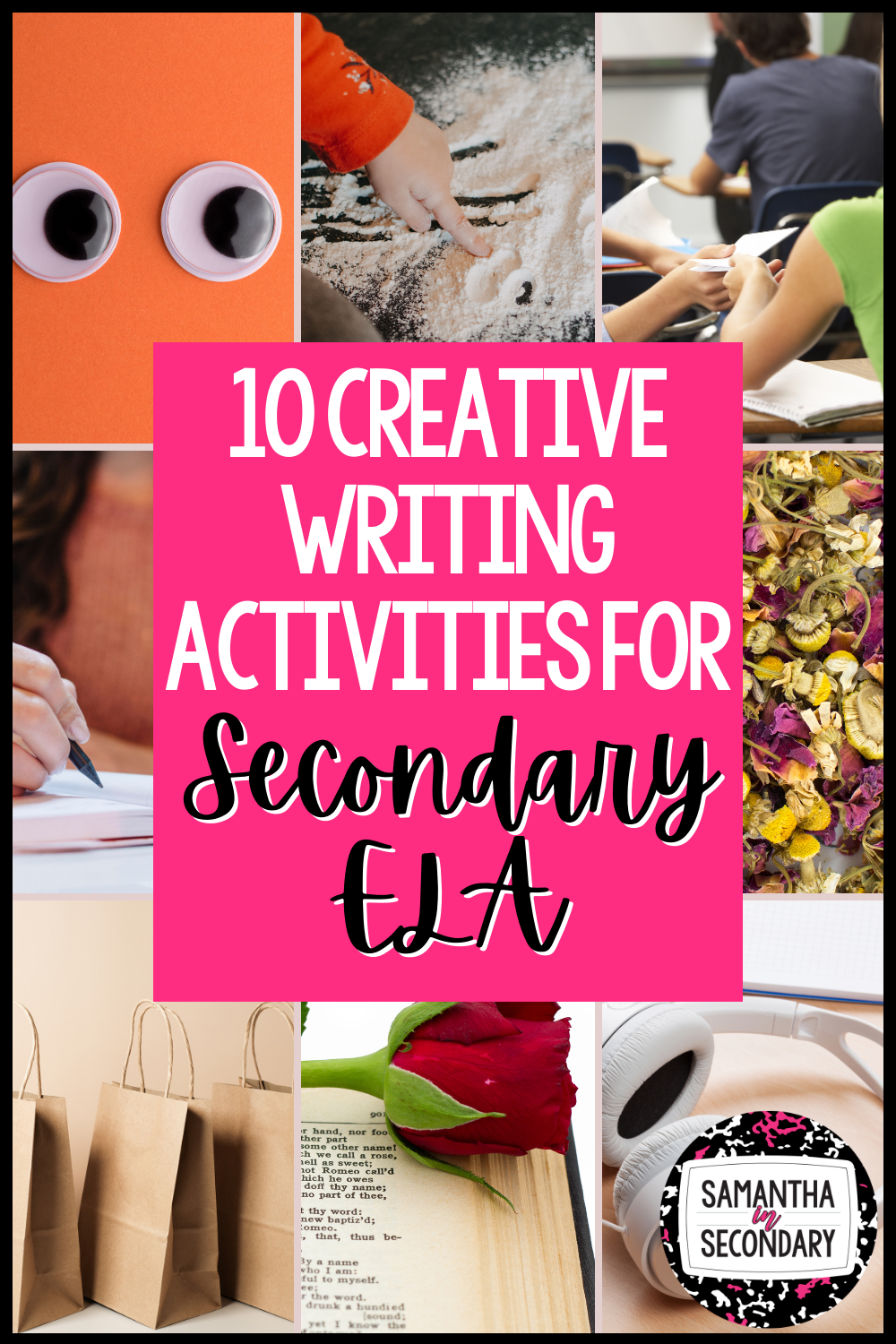
#1: Googly Eyes
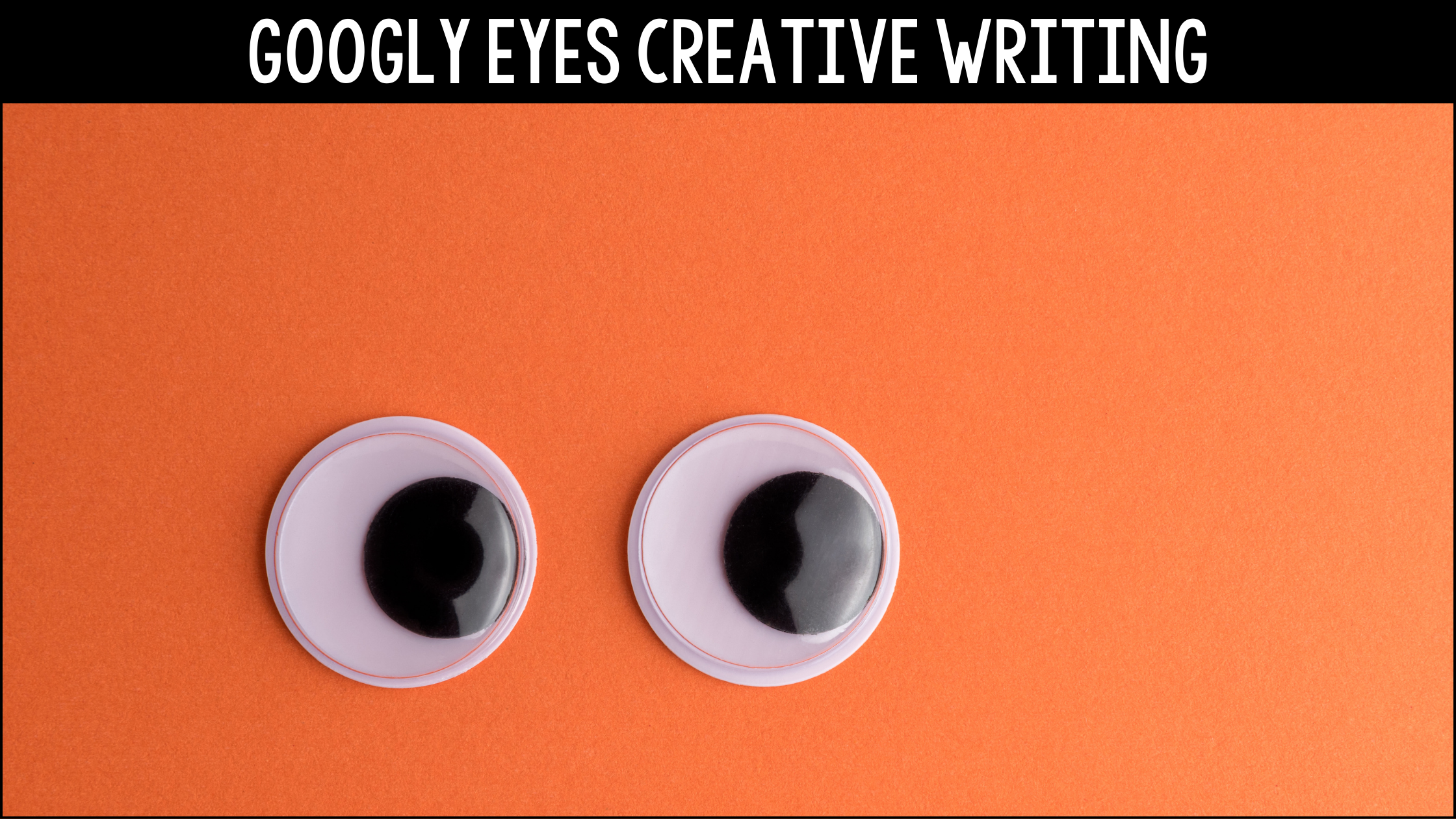
This activity is super easy and fun- all you need is a bag of stick-on googly eyes! How many smirks will you get from students if they walk in and see the stapler, a book, the globe, a tray from the cafeteria – staring at them? Students can work on writing from a variety of points of view with this easy writing assignment. It’s a perfect warm-up writing activity or a great thing to pair with a discussion about writing from various POVs.
#2: Sensory Writing
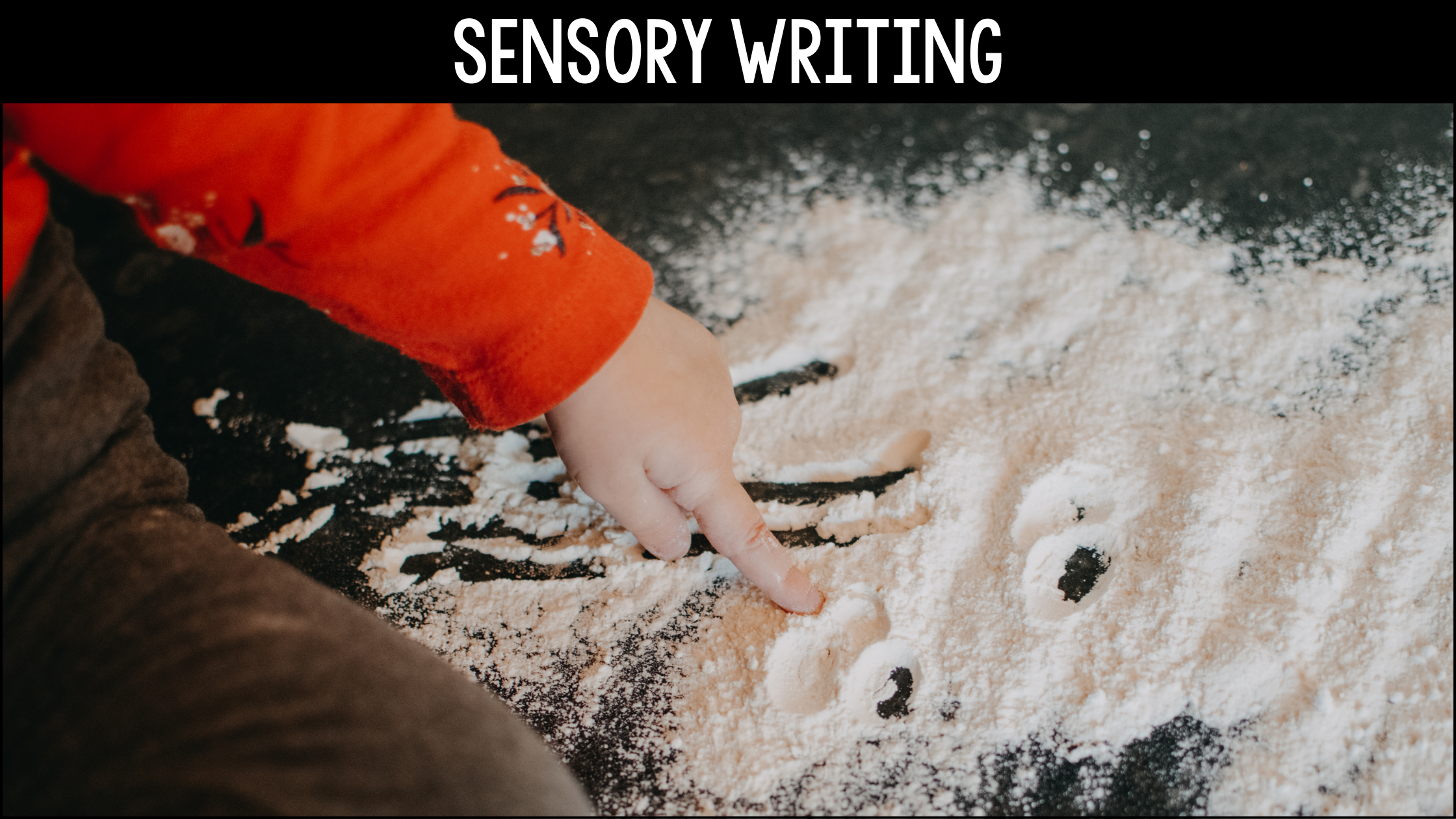
Teach students to key in on sensory details with a writing activity focused on the 5 senses. This is also a low-prep activity. Take students outside for a few minutes at the start of class to pick up an object from outside or pass out a piece of candy to each student (see this example that I use every Halloween!).
You can make it an added challenge by limiting the senses they can use. Bring an object in a bag that students must reach into and describe by touch only. Or have students pull an ordinary item from their backpacks and have them use their sensory writing to describe the item without any sight sensory language. Don’t have enough items? Pick obscure concepts to describe with the senses. How do you describe yellow? Forgiveness? The smell of rain?
#3: Visual Narrative Writing Prompts
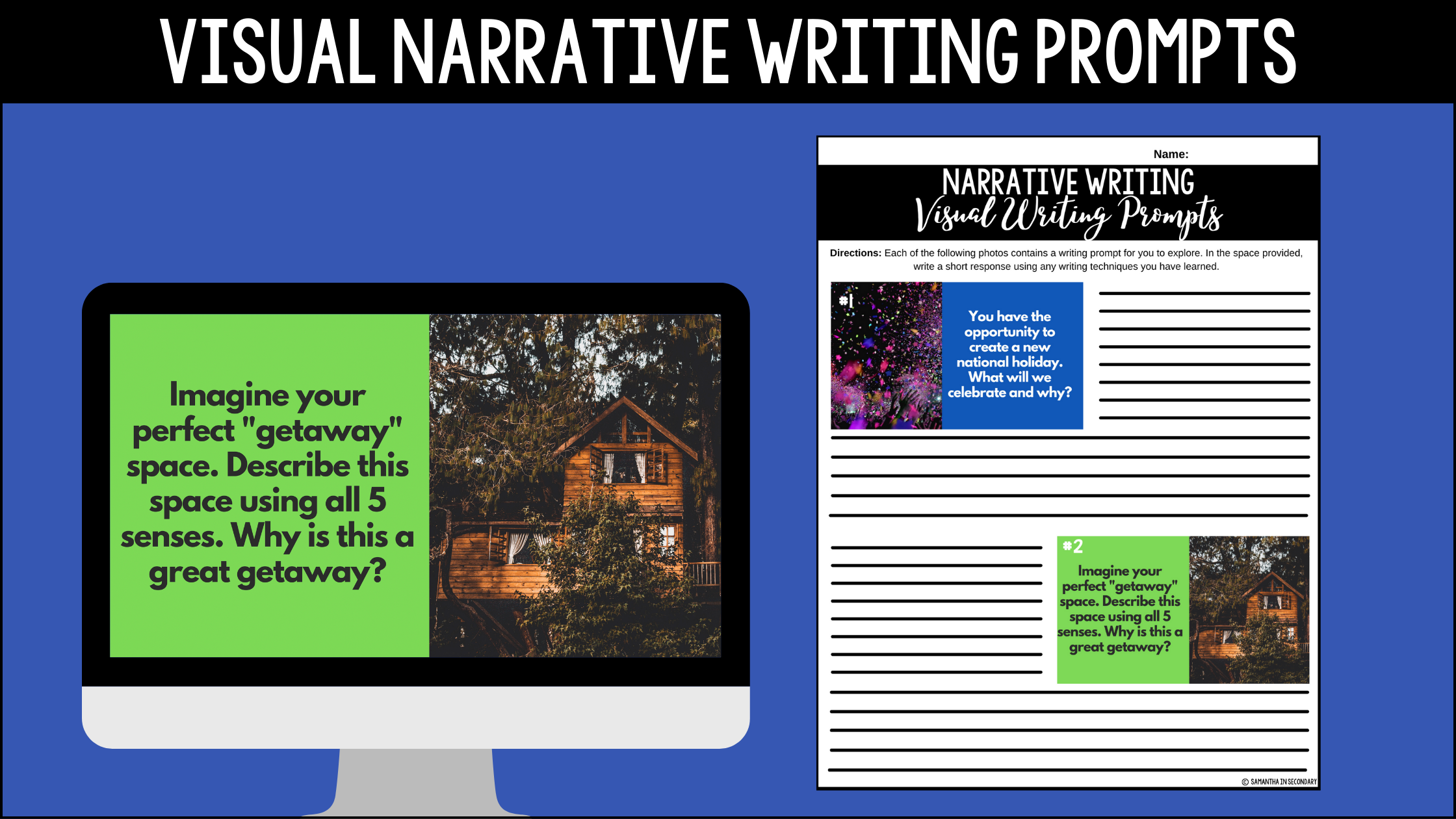
I’m a big fan of providing visuals for writing prompts. It’s as simple as putting together a slide with a prompt and a matching image. Or finding short clips for students to watch. Prompts can be as funny, serious, contemplative, and imaginative as you want. They can be tailored to any concept you are reviewing, upcoming holiday, school event, or just the general interests of your class. This creative writing activity is a little more time intensive to set up a visual and prompt for students.
I do have seasonal visual narrative writing prompts for the whole year available here. Keep your students’ creativity sharp all year long with this collection of 100 writing prompts spanning ten seasonal topics. Fun and easy-to-use, you can implement them as bellringers, routine assignments, creative projects, journaling, and more – all while helping students explore new ideas and honing their narrative techniques.
#4: Roll a Stories
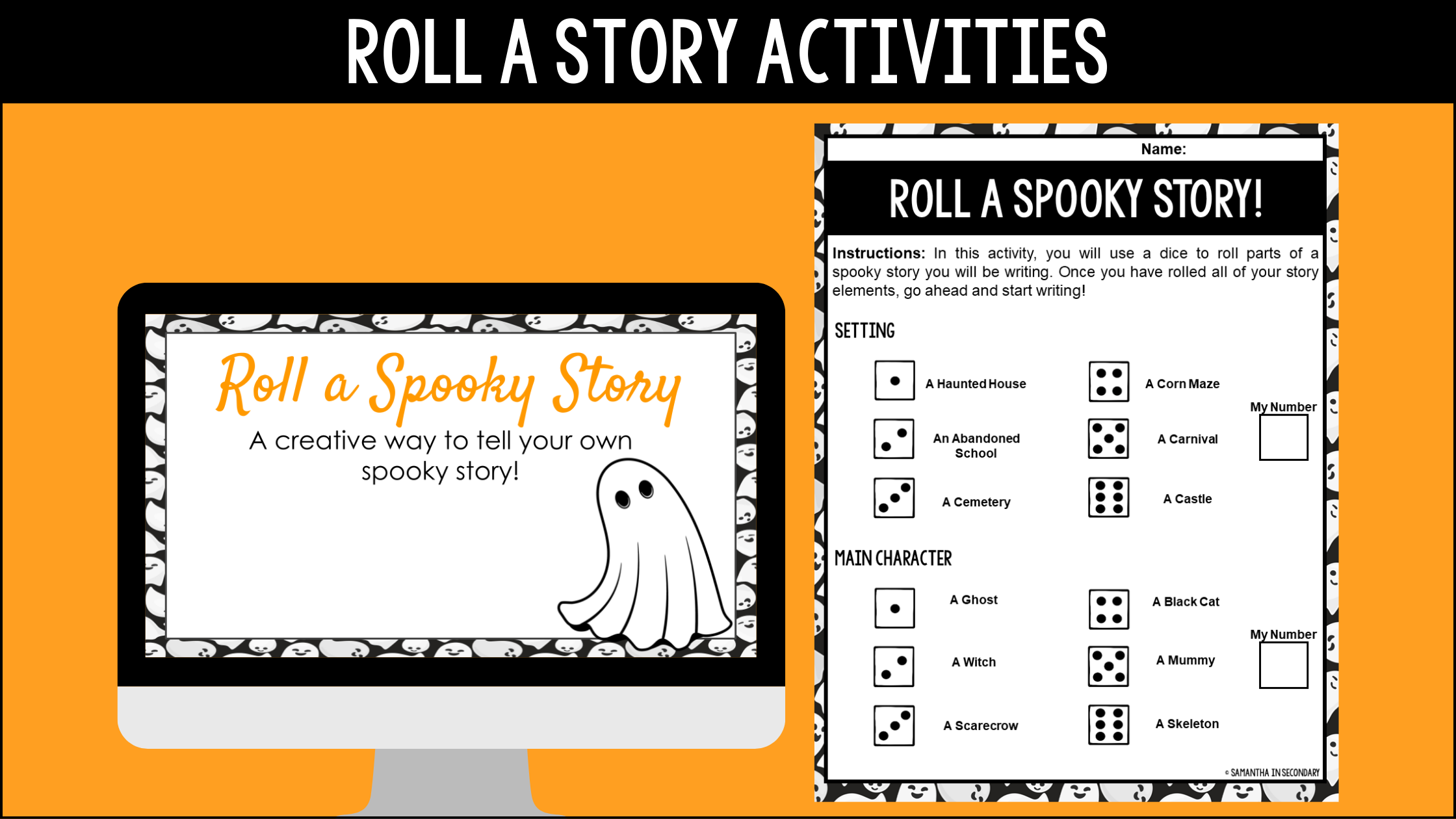
These are such fun and reusable! Your students will never write the exact same story twice. You can adapt it as a whole-class adventure, small groups, or individually. Different aspects of the story will be determined by the roll of the dice. Once students have all of their story elements, they are ready to put the pieces together into a creative writing project. Again, this is an activity that needs a little set up, but there are resources available like this suspenseful version here or this Thanksgiving-themed version here. Even better, you can grab my seasonal bundle and get a year of activities done for you right here.
#5: Story Passing Activity
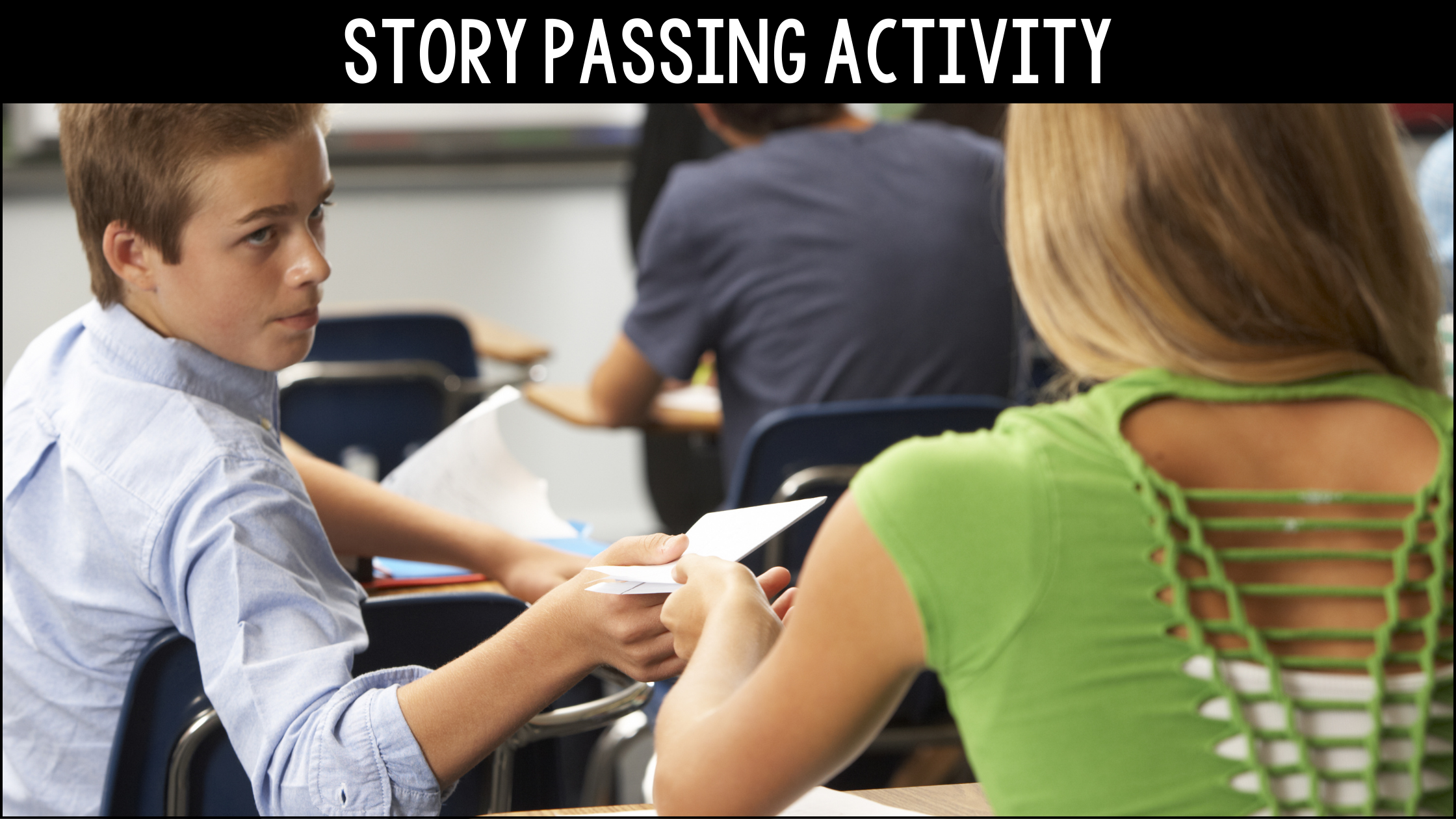
In this collaborative story-passing activity, students initiate a story and pass it to others at set time intervals. It can be used alongside supplementary activities like visual narratives. Start by setting a timer for students to write, then have them pass the story to a partner or within a small group. This creative writing exercise offers a unique challenge as students lack complete control over the story’s direction, infusing it with a delightful “mad libs” unpredictability. Continue passing the story until the timer expires or all group members have contributed, and finally, read the collective creation aloud for an engaging and imaginative writing experience.
#6: Photo Writing
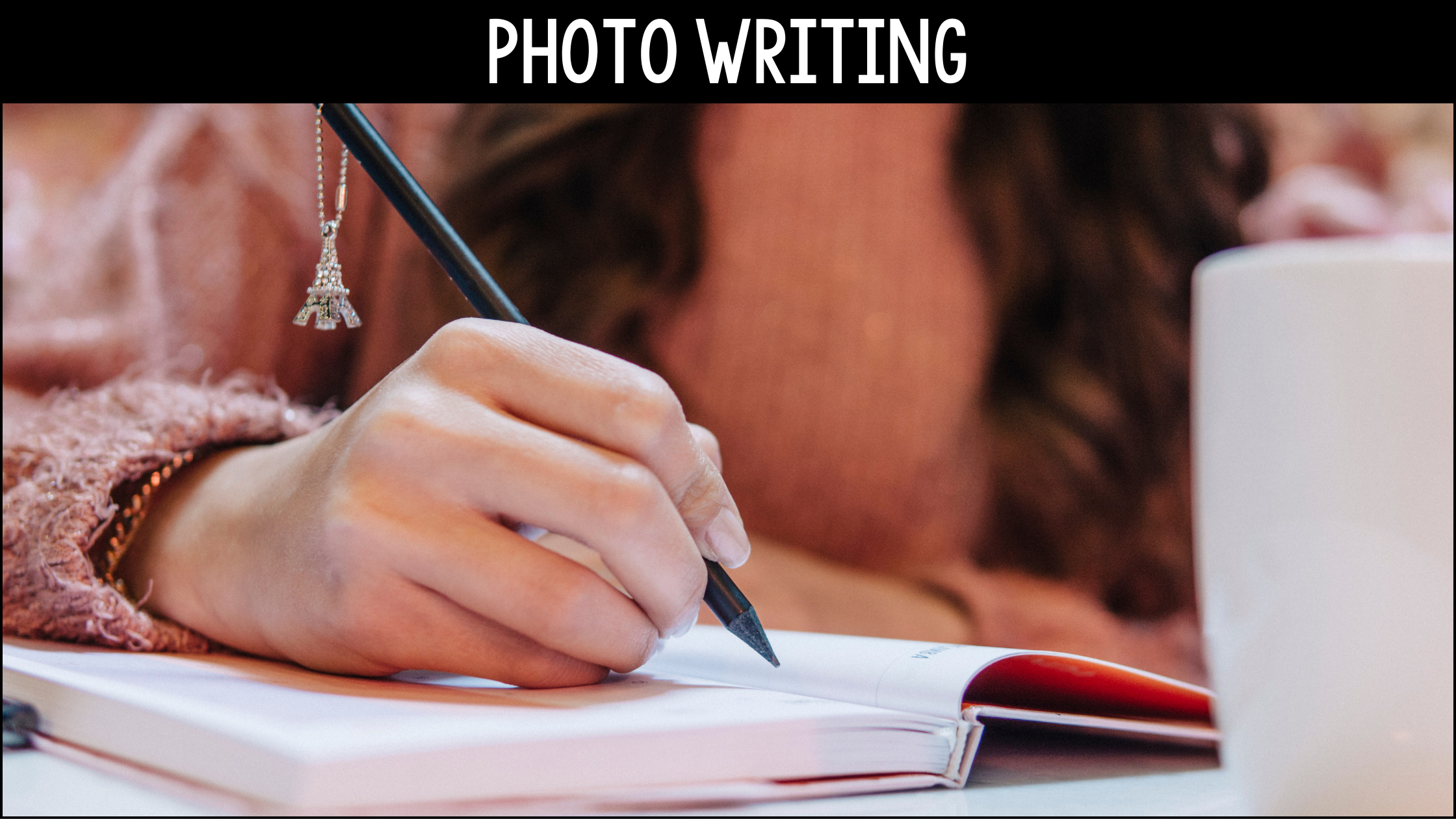
A really easy option for a creative writing assignment is to pull photos and have students write about it. There are many free photo sites that you can utilize, there are even some great ones in Canva that you can use and drop into slides or worksheets for your class. You can search by theme or holidays, or just find a handful that seem interesting and let students write. Your whole class can write from the same photo, or you can print and create a collage on your board for students to walk up and take what inspires them. You can give parameters to the photo writing like, “Must include 20 adjectives about the photo” or “cannot be first person.” The point is, you’re providing a visual for students to concentrate on and build their creative response around it.
#7: Loose Parts Writing
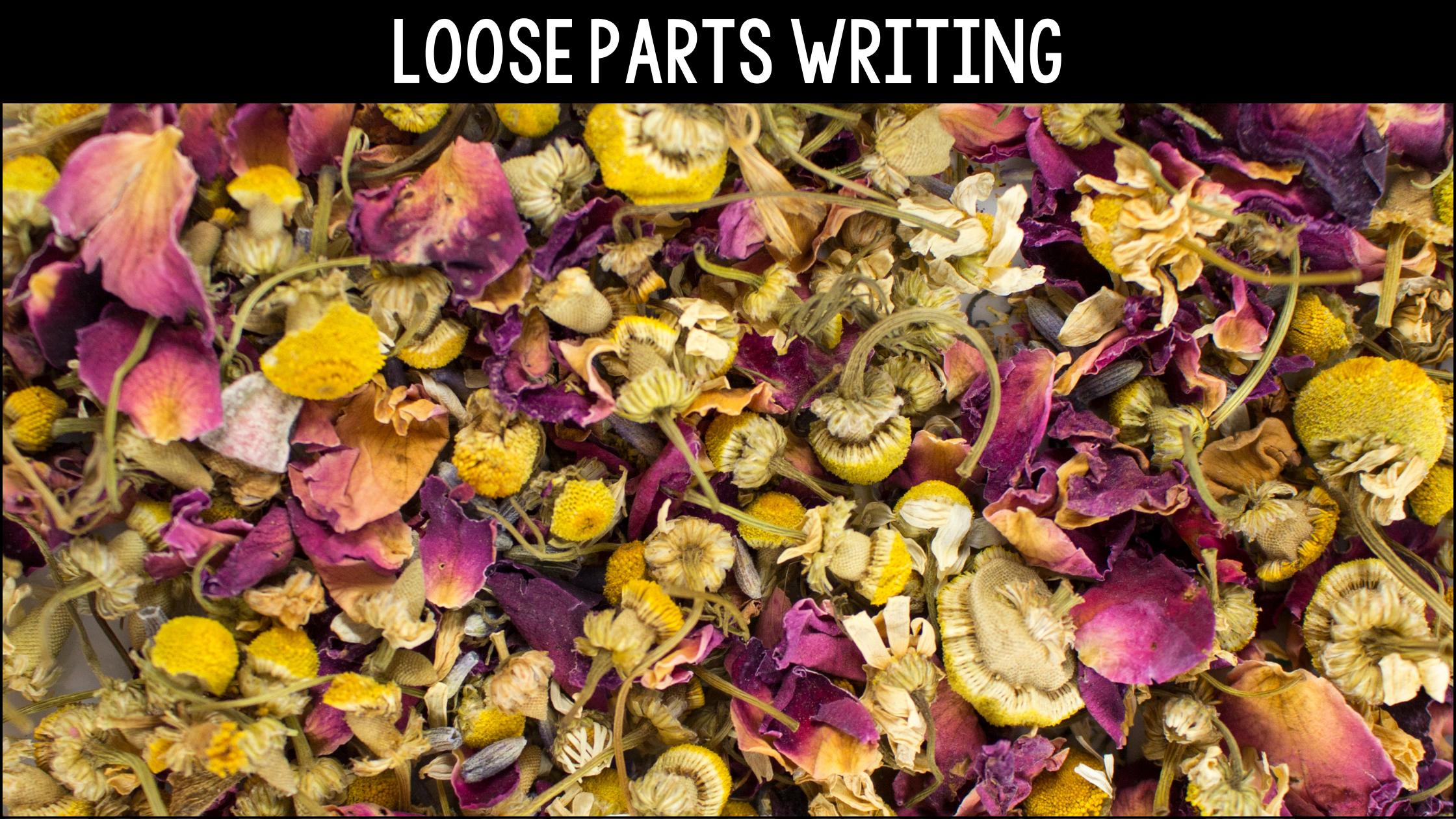
A more symbolic approach to creative writing is loose parts writing. Think about the symbolism that different objects have. Similar to sensory writing, students can use objects to inspire their writing. Better yet, use unassuming objects to inspire. Give one student a craft stick, another a rock, find a pipe cleaner or a marble. Maybe their object isn’t allowed to “be itself” – and the marble is a magic gem, the craft stick is a wand, a rock is a small alien spacecraft. One of my favorite people to learn about Loose Parts Writing from is Angela Stockman. Click here to read one of her blog posts all about it.
#8: Grab Bag Writing
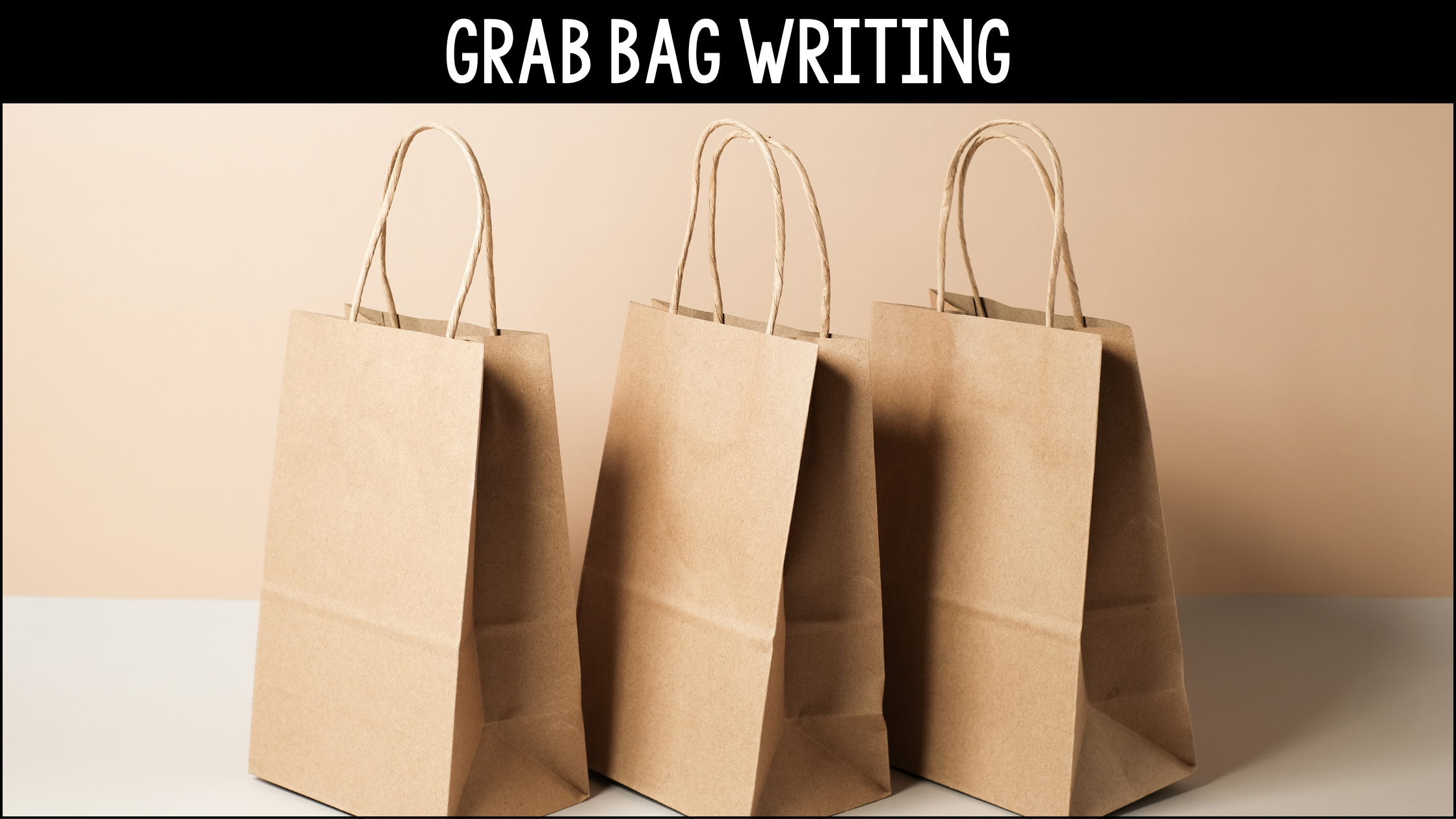
Very similar to loose parts writing is grab bag writing. This requires a little bit of prep, but basically each student or small group receives a bag of random objects. All of these must be incorporated into their story telling. You can go with themes like nature items or art supplies. Maybe everything in the bag is the same color.
You can also try a word grab bag. This is a nice option if you’re strapped for prepping several individual bags or just want students to work on a specific set of vocabulary. Each individual or group has a printed list of words that must be used. Or, you can use a site like The Problem Site which has a Grab Bag Random Word Generator that let’s you (or students) select how many words will be added to their grab bag.
#9: Retellings
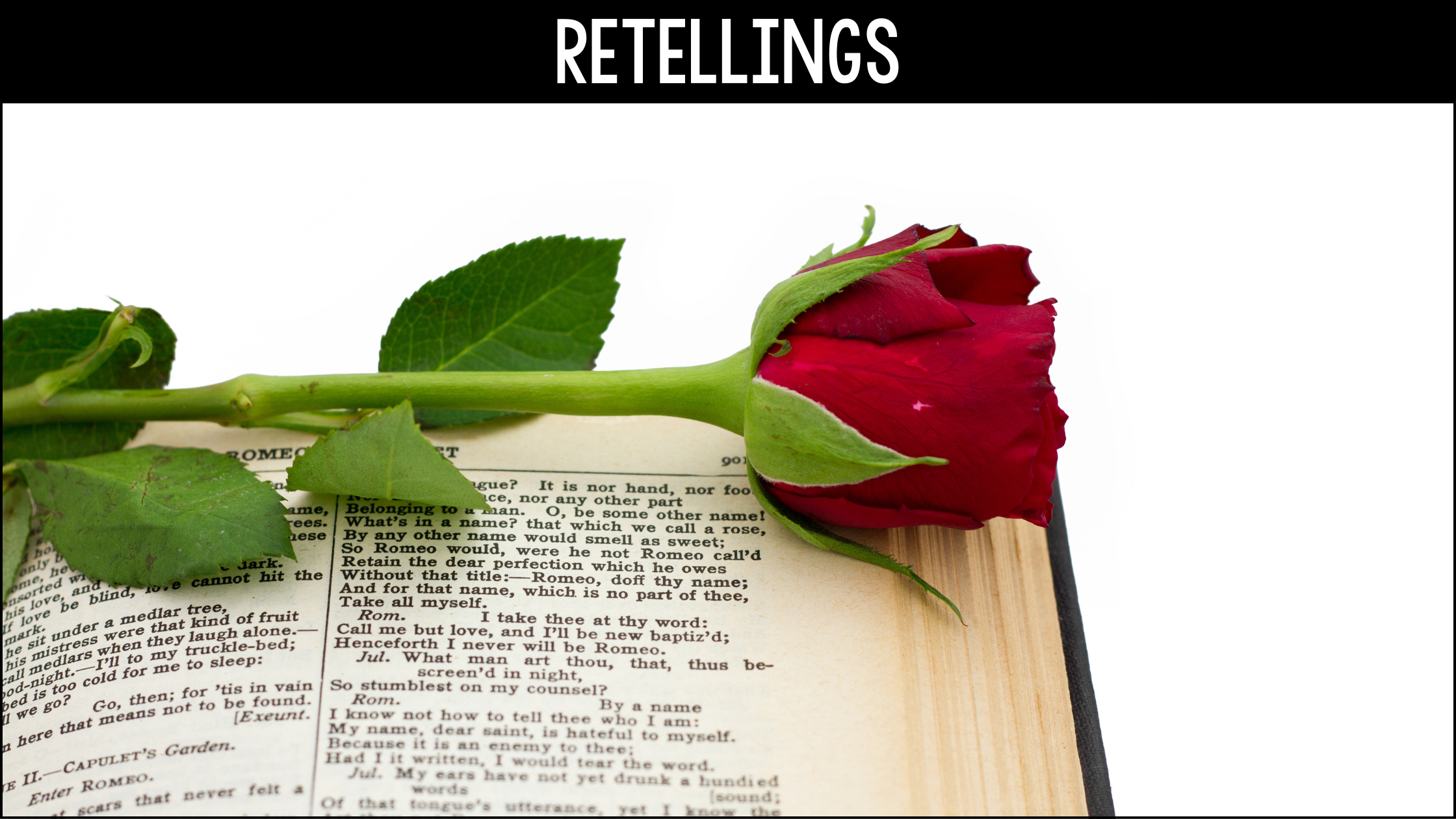
Having students retell stories they are familiar with is a great way to boost confidence and focus. Students don’t necessarily have to start from scratch, but instead are working on those finite detail changes to make a story uniquely theirs. Create a list of fairy tales or common story plots. Maybe use superhero origin stories, the latest action film, or a well-loved book. It doesn’t even need to be a modernization – what if Goldilocks and the Three Bears were retold as an underwater themed story? What about a Romeo and Juliet gender-bender? Click here to see my done-for-you project all about updating a classic story.
#10: Audio-Inspired Creative Writing
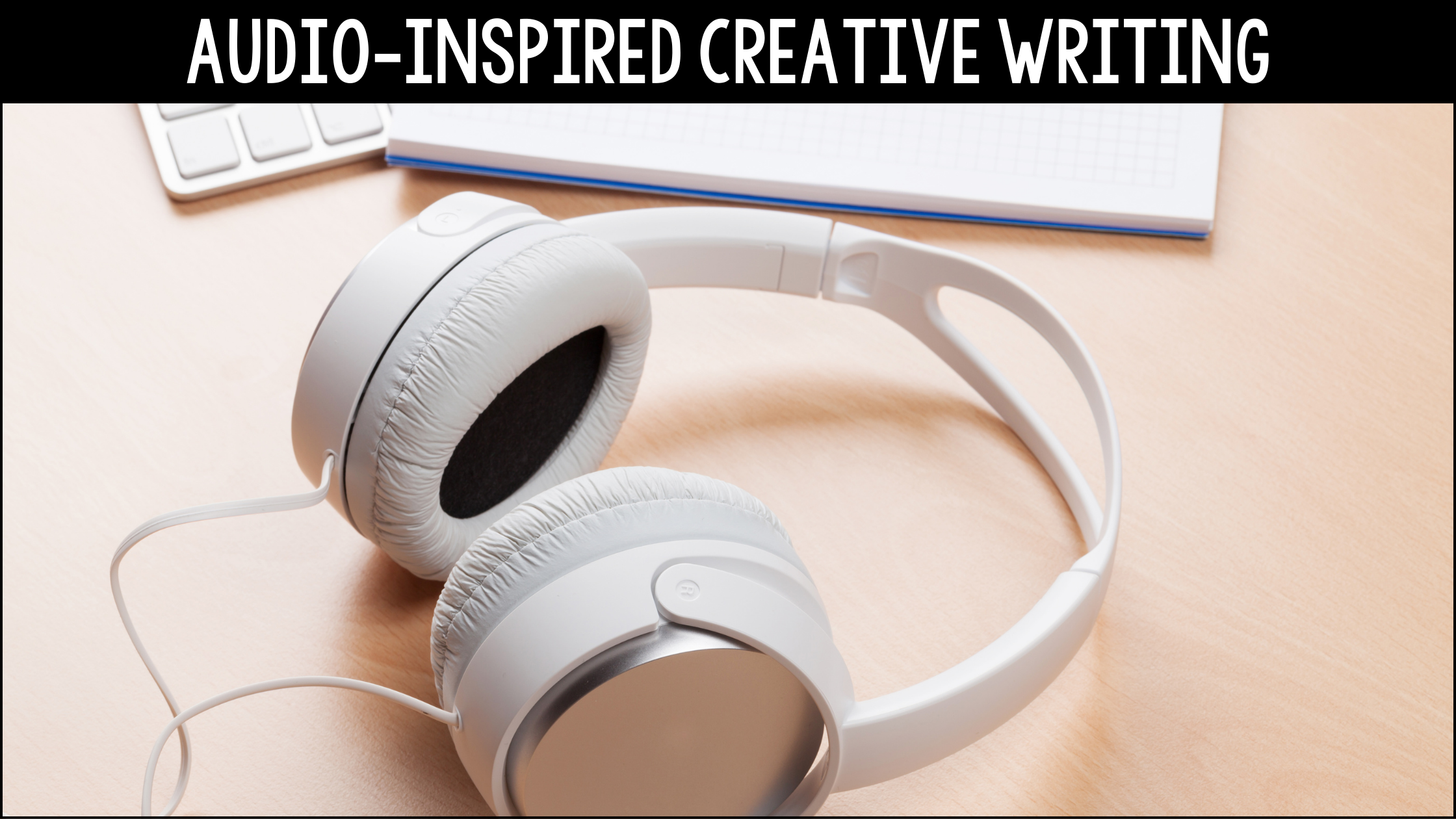
The world is full of great music, bring a little to the classroom! I would definitely suggest using instrumental arrangements. Have students write a creative writing piece as they listen to the music. You can find short arrangements or longer pieces with multiple movements. You can have students listen to something shorter, then write, or have them write as they listen so the story changes as they listen. There are many classical works from operas that are pretty unknown, so have students write what they think the “story” is from the orchestra and then share what the actual opera production is.
Get My Narrative Writing Unit Bundle!
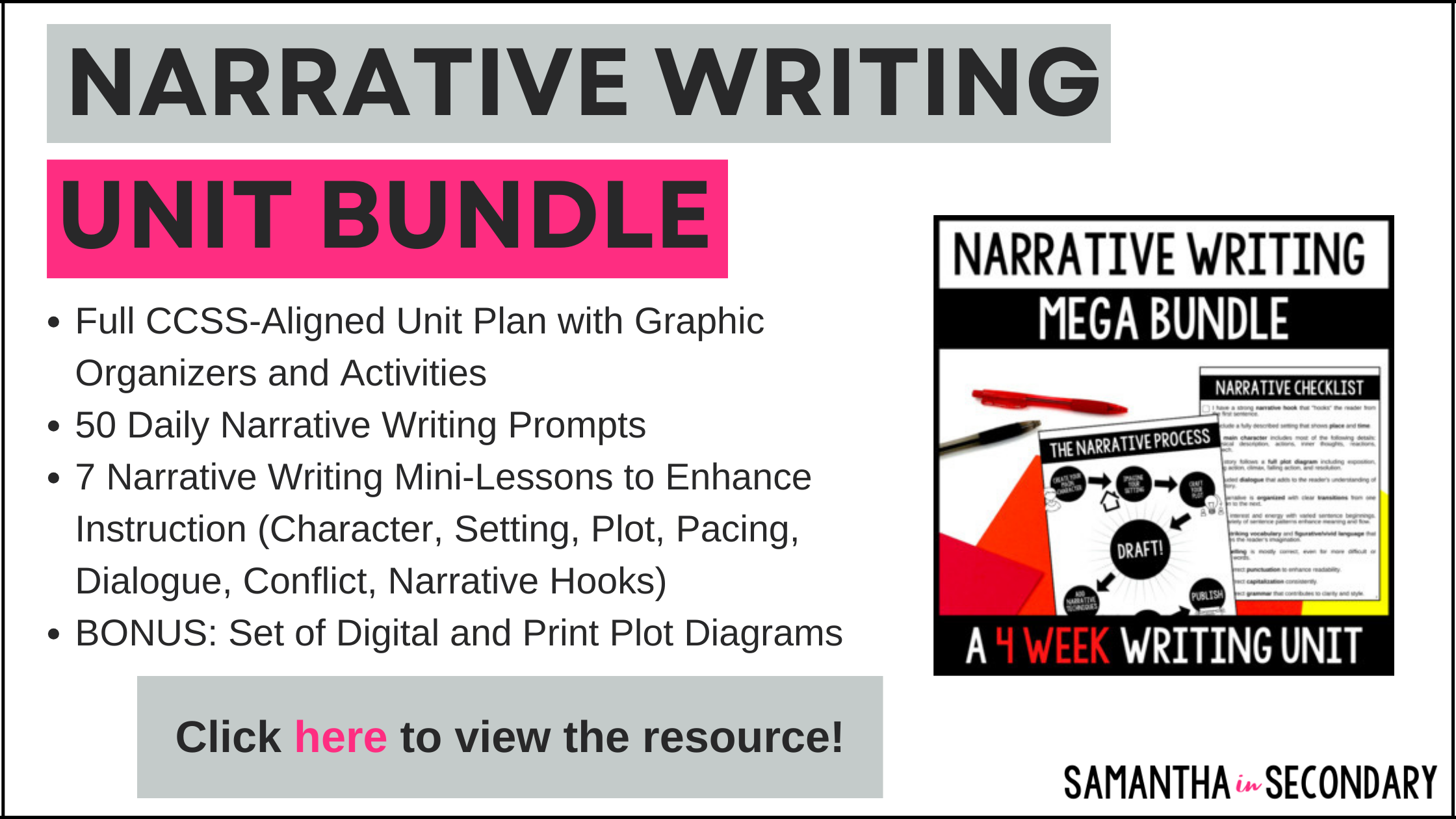
Take your narrative writing unit to new heights with my Narrative Writing Unit MEGA-BUNDLE! This comprehensive resource is your one-stop solution, delivering nine narrative writing tools that transform your instruction into an immersive and empowering experience. With a complete unit plan, literary element mini-lessons, daily writing prompts, practice activities, graphic organizers, and more, this bundle guides you every step of the way. Your students will gain a profound understanding of each literary element, crafting polished short stories that showcase their very best efforts. You’ll be astounded by the remarkable work your students can produce using this proven system. This bundle includes 50 daily narrative writing prompts, a full CCSS-aligned unit plan with graphic organizers and activities, seven narrative writing mini-lessons covering character, setting, plot, pacing, dialogue, conflict, and narrative hooks, plus a bonus set of digital and print plot diagrams. You’ll be amazed at the quality of work your students can produce using this tried-and-true system!
What are your best creative writing activities that you like to use in secondary English? Do any of these no to low prep options inspire you for your own classroom? Sound off in the comments below or follow me on Instagram for more!
Happy teaching!



